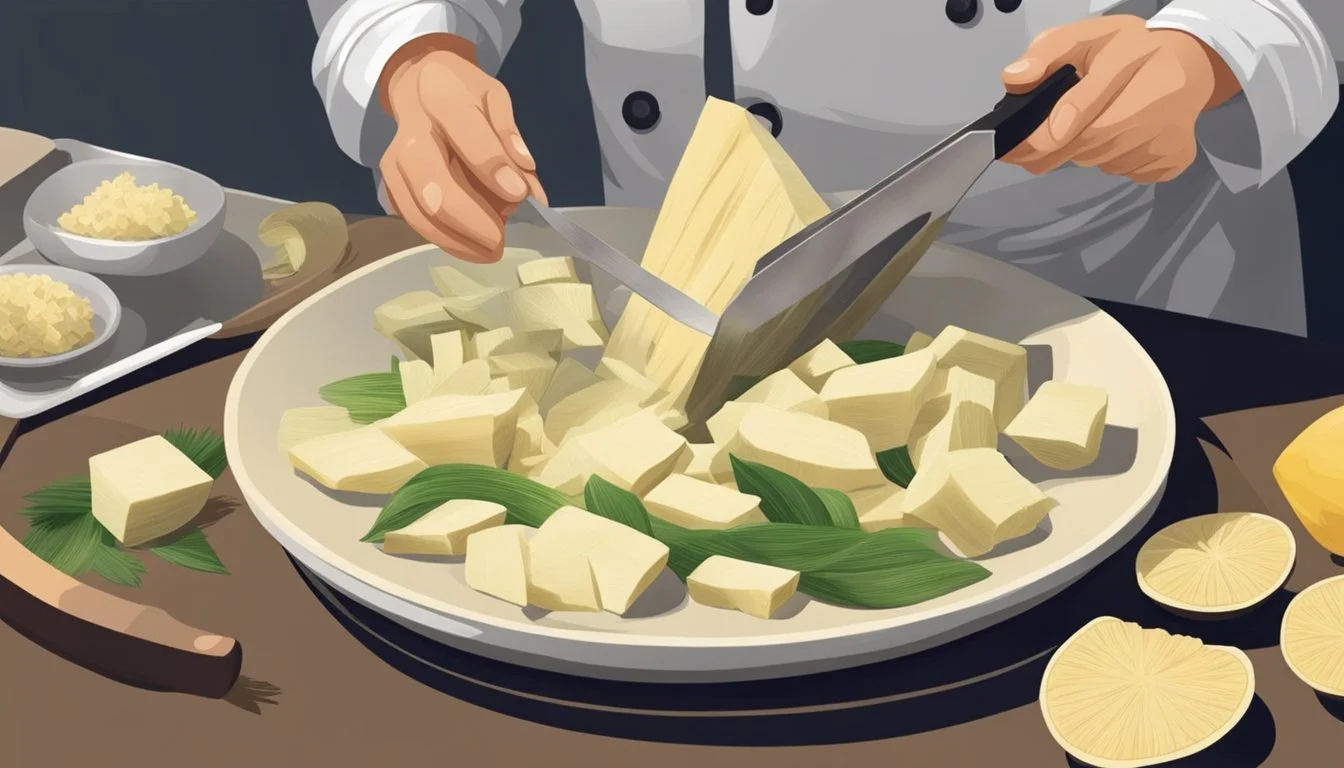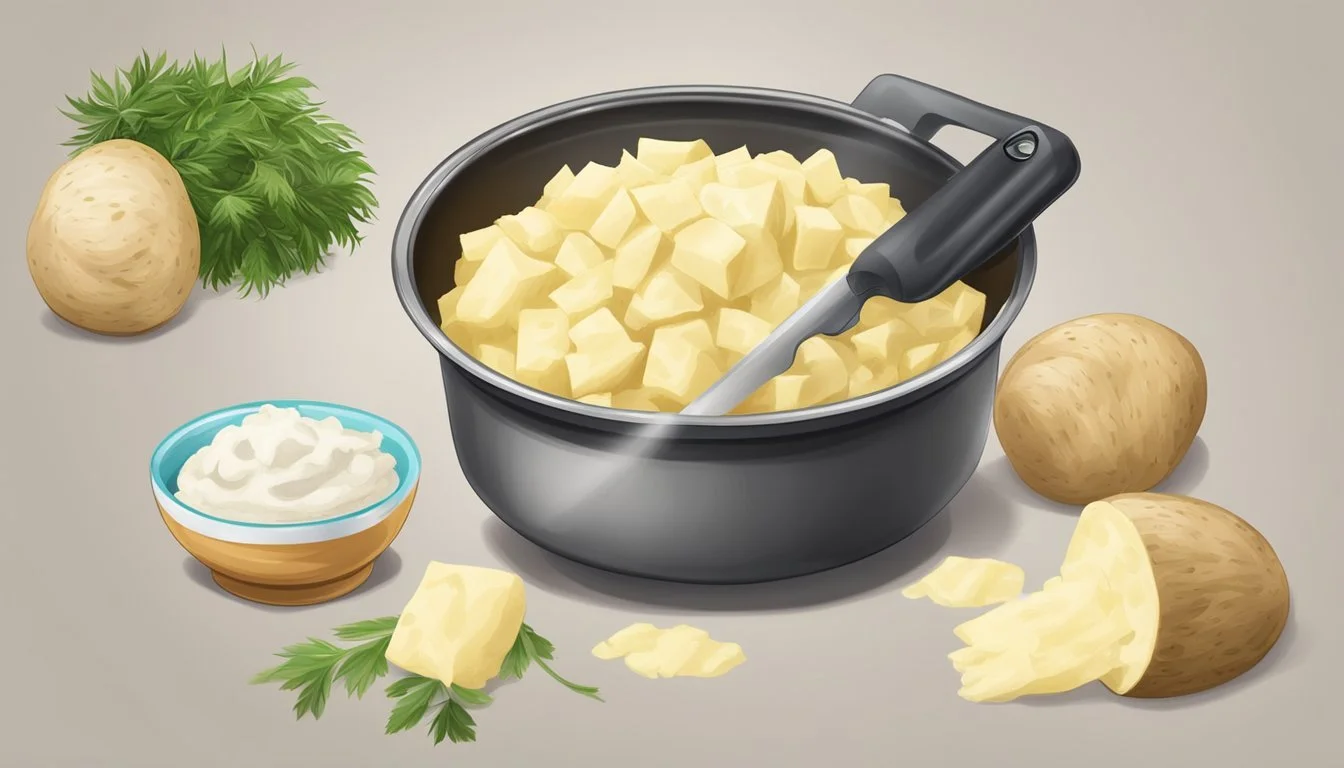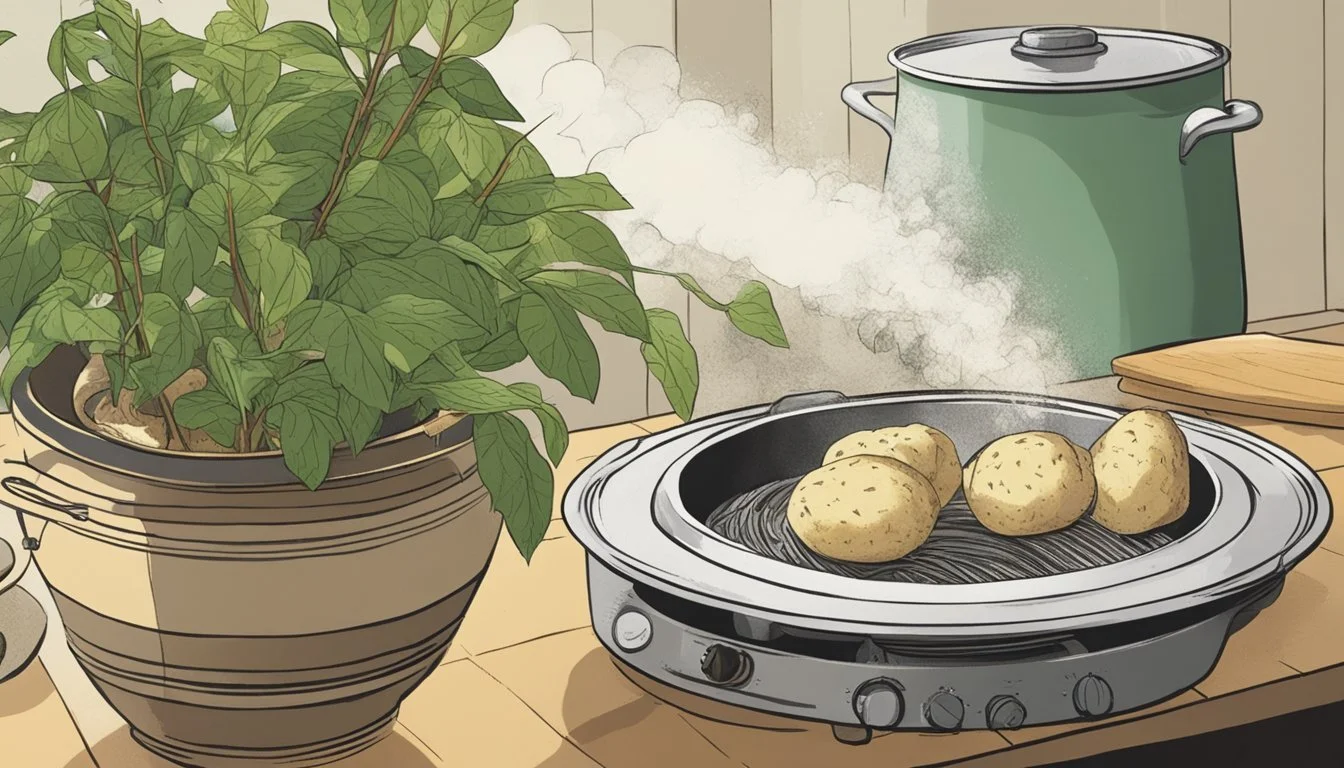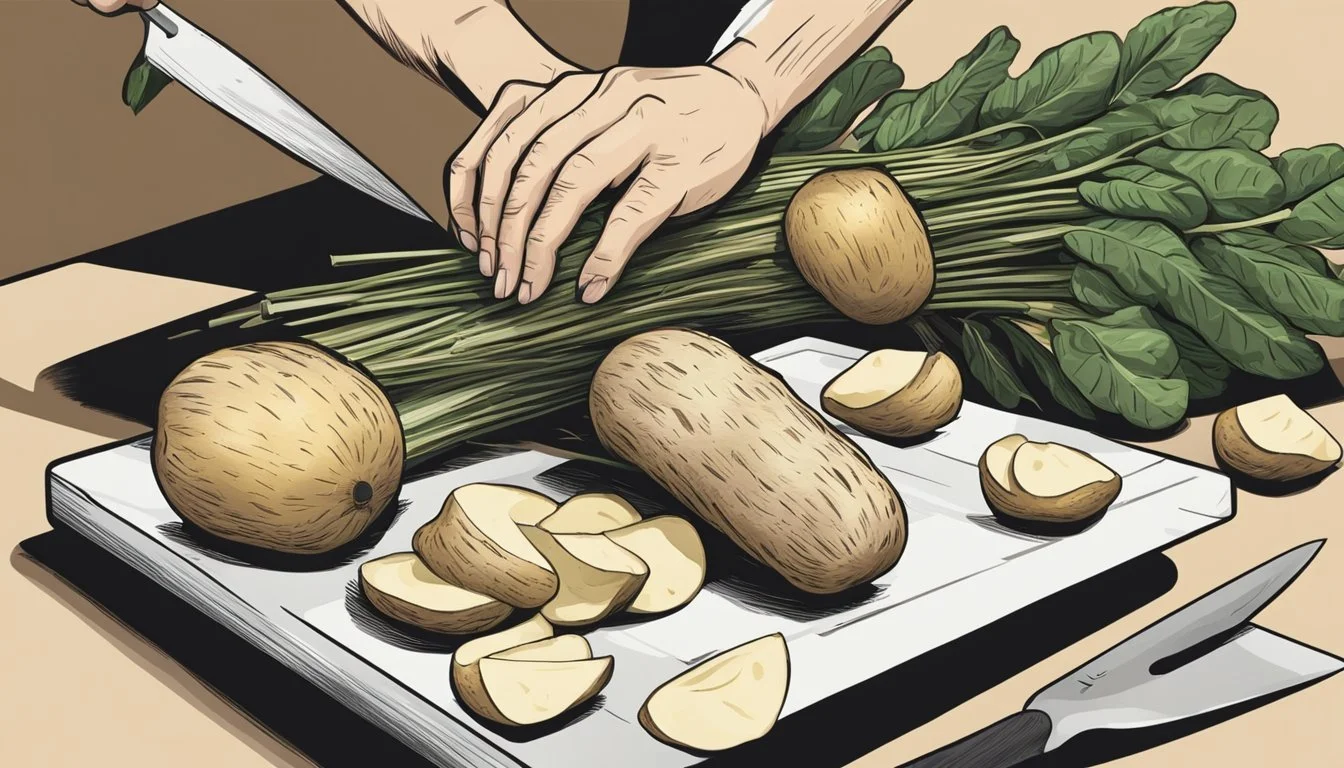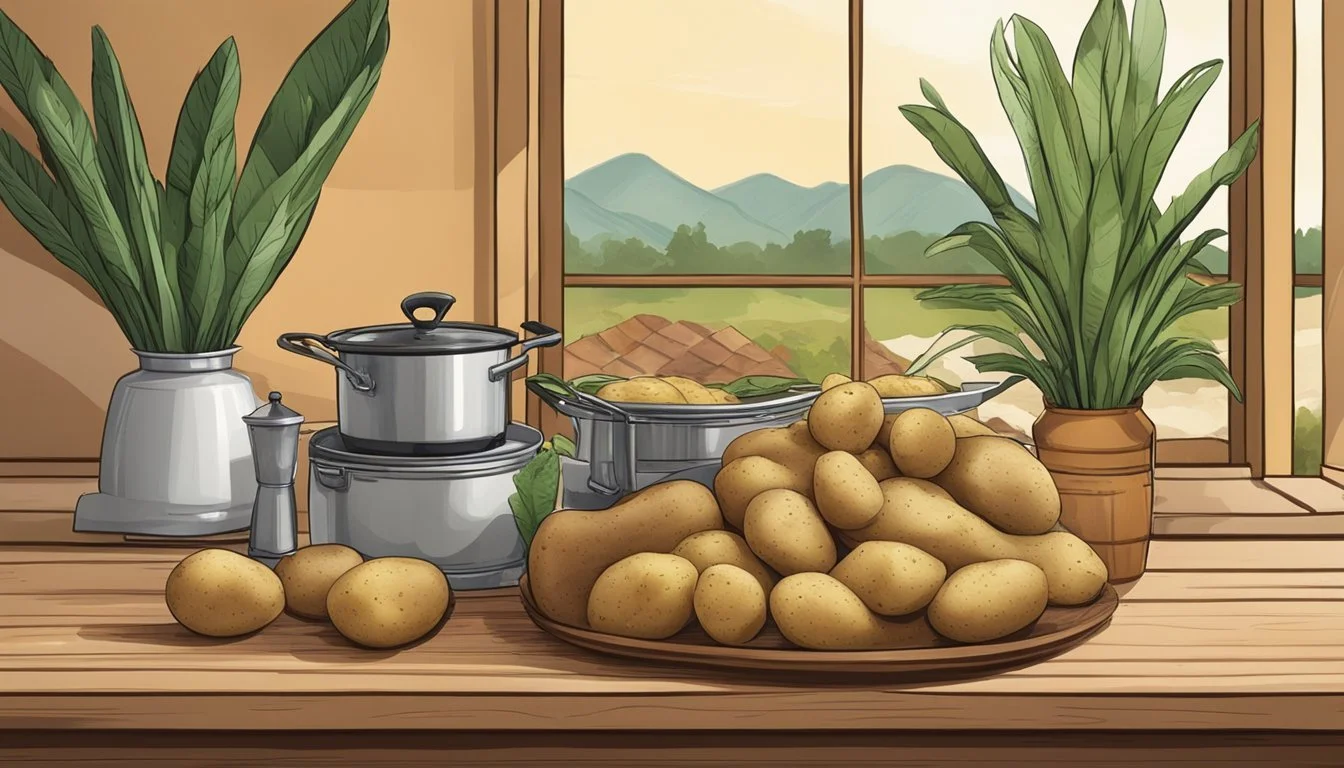How to Substitute Yuca for Potatoes
Mastering Latin Dishes with Ease
Yuca, also known as cassava, is a staple tuber in Latin American cuisine and offers a robust alternative to potatoes. (What wine goes well with potatoes?) Its starchy texture and mild flavor make it an excellent substitute in a variety of dishes, from the main course to side dishes and even snacks. When properly prepared, yuca can mimic the role of potatoes, offering a similar mouthfeel and the ability to absorb the rich flavors of spices and herbs inherent in Latin cooking.
Incorporating yuca into traditional potato-based recipes requires understanding its unique properties. Unlike potatoes, yuca has a tougher exterior that needs to be removed before cooking, and it contains a fibrous core that is typically discarded. Once peeled and cored, yuca can be boiled, mashed, fried, or baked, making it a versatile replacement for potatoes. The texture of yuca is slightly denser than that of potatoes, which can add a hearty quality to traditional Latin American dishes.
Utilizing yuca as a substitute not only diversifies the flavors in one’s cooking repertoire but also provides nutritional benefits. Yuca is gluten-free and a rich source of carbohydrates, making it an ideal ingredient for those looking to avoid gluten or incorporate more energy-sustaining foods into their diet. When transitioning from potatoes to yuca, the key is to experiment with cooking times and techniques to achieve the perfect consistency that both complements and enhances the culinary experience of Latin dishes.
Understanding Yuca
Yuca, also known as cassava, is a versatile root vegetable integral to various dishes in Latin America and other tropical regions. This starchy tuber serves as a substitute for potatoes, providing a unique texture and flavor profile.
The Origins and Cultivation of Yuca
Yuca is native to South America but has been cultivated extensively across the tropics, particularly in the Caribbean, Africa, and Latin America. This root vegetable thrives in well-drained soils and tropical climates, making it a staple crop in many developing countries. The cultivation of yuca is essential for food security in these regions, as it can withstand harsh conditions and poor soil quality better than many other crops.
Nutritional Comparison: Yuca vs. Potatoes
When comparing yuca to potatoes, it's important to understand the nutritional differences:
Nutrient Yuca (per 100g) Potatoes (per 100g) Calories 160 77 Fiber 1.8g 2.2g Vitamin C 20.6mg 19.7mg Potassium 271mg 421mg Calcium 16mg 12mg Protein 1.36g 2g
Yuca is higher in calories and calcium but lower in protein and potassium compared to potatoes. Its high fiber content means it can aid in digestive health, while its notable levels of vitamin C contribute to immune system health. Due to its low glycemic index, yuca can offer health benefits, such as stabilizing blood sugar, which makes it a viable alternative for those managing diabetes.
In summary, yuca's unique nutritional profile presents it as a beneficial and culturally significant substitute for potatoes in many Latin dishes.
Prepping Yuca for Cooking
When substituting yuca for potatoes in Latin cooking, proper preparation is crucial. The process involves selecting the right roots, storing them properly, peeling, cutting, and addressing safety concerns related to yuca's natural cyanide content.
How to Select and Store Yuca
When selecting yuca, one should look for firm roots with a clean smell. A good yuca root is usually covered in wax to prolong its freshness. To store yuca, keep it in a cool, dark place if it is to be used within a few days, or peel and freeze it for extended storage. Their shelf-life is somewhat similar to that of potatoes, though yuca's waxy coating provides a bit more protection against spoilage.
Peeling and Cutting Techniques
Yuca's thick skin must be removed before cooking, as it is not edible. Peel yuca with a sharp knife, starting by cutting off the ends. Stand the yuca upright and slice down the side to remove the peel and the woody layer beneath it. For cooking, cut the peeled yuca into chunks similar in size to those one would cut potatoes into, ensuring even cooking times. Because yuca is denser than potatoes, smaller pieces can be more manageable.
Step-by-step peeling:
Cut off both ends of the yuca root.
Slice vertically to remove the thick skin and the layer underneath.
Make sure to remove all the waxy layer.
Proper cutting:
Cut peeled yuca into 2-3 inch sections.
Split each section in half if desired, to check for and remove any fibrous stems.
Preventing Discoloration and Toxicity
Yuca, particularly the sweet variety, contains some cyanide which can be toxic. This concern is eliminated by proper cooking. Once yuca is peeled and cut, it should be submerged in water to prevent discoloration, similar to potatoes, and to begin the leaching process of the toxins. It is then recommended to boil yuca prior to its final cooking stage, whether it's roasting, frying, or mashing, to ensure complete removal of any harmful cyanide compounds, as well as to soften its starchy texture.
Key safety measures:
Submerge the cut yuca in water immediately after cutting to prevent browning.
Always boil yuca before final cooking preparation, for at least 20 minutes, to ensure cyanide is neutralized.
Cooking with Yuca
Yuca, also known as cassava, is a highly versatile root that serves as an excellent substitute for potatoes. Its starchy composition makes it suitable for a variety of cooking methods, from boiling and mashing to frying and baking.
Boiling Yuca
Boiling yuca is the foundation for many recipes. To boil yuca, one must first peel the root thoroughly to remove the waxy skin. It is then cut into chunks and placed into boiling, salted water. The yuca should be boiled until it is fork-tender, which typically takes about 30 minutes.
Mashing Techniques
After boiling, yuca can be mashed similar to potatoes. The key to a smooth mash is to remove the tough, fibrous core that can sometimes be present in larger roots. Adding butter and milk will enrich the texture and flavor, creating a dish akin to mashed potatoes. For a lighter version, one may use olive oil instead.
Frying Yuca into Fries
Yuca also makes for delicious fries. To fry yuca fries, one needs to boil the peeled yuca sticks until slightly soft, and then fry them in oil until golden and crispy. This results in fries that are similar in texture to french fries but with a distinct, slightly sweet flavor.
Creating Yuca-Based Side Dishes
Yuca can be transformed into various side dishes. Once it is boiled and softened, it can be mashed for a side similar to mashed potatoes, or fried to make fritters. The high fiber content of yuca lends itself well to creating sides with a satisfying bite, which can accompany main dishes robustly.
Yuca as a Potato Substitute
In Latin cuisine, yuca can be a versatile substitute for potatoes, offering a different texture and a slightly sweeter flavor. When incorporating yuca into recipes traditionally designed for potatoes, chefs should consider the tuber's unique characteristics for a successful dish.
Flavor Profile and Texture Considerations
Yuca, also known as cassava, is a starchy root vegetable that is a staple in many tropical countries. It tends to have a slightly sweet taste, which can enhance the flavor profile of a dish. Yuca's texture is firmer than that of the average potato, and it can provide a more toothsome bite. It's also richer in fiber and can add a unique twist to the mouthfeel of conventional potato dishes.
Adapting Potato Recipes for Yuca
When substituting yuca in potato recipes, consider the following adjustments to accommodate the textural differences:
Boiling: Yuca takes longer to cook through, so increase boiling time until it's tender.
Baking: Yuca might require a higher moisture content, so adding extra liquid can be beneficial.
Frying: Slices of yuca may need to be thicker than potato slices to maintain their structure.
Always remove the fibrous core of yuca before cooking, as it can be tough and is not typically eaten.
Suggested Recipes and Variations
Yuca can replace potatoes in many dishes, catering to a wide range of preferences. Here are some suggested recipes where yuca is used as a substitute:
Yuca Fries: Cut yuca into french-fry strips, fry until golden brown, and serve with a dipping sauce.
Mashed Yuca: Prepare similarly to mashed potatoes, adding butter and milk for creaminess.
Yuca Hash Browns: Grate yuca and form into patties, then fry for a crispy breakfast side.
Each recipe showcases yuca's starchiness and can be seasoned with traditional Latin American spices for an authentic flavor. Adjustments in cooking times are necessary to achieve the desired texture when using yuca as a replacement for potatoes.
Health and Diet Considerations
When substituting yuca for potatoes, it is essential to consider its impact on health and diet, particularly regarding nutritional content and suitability for various dietary needs.
Dietary Restrictions and Allergies
Yuca is naturally gluten-free, making it an excellent option for those with gluten-related disorders, such as celiac disease. Unlike some other starches, yuca does not contain nightshades, which are often implicated in food sensitivities and may cause inflammation in sensitive individuals.
Benefits of Yuca in a Healthy Diet
Yuca is a valuable inclusion in a healthy diet due to its high levels of dietary fiber, which aids digestion and helps in maintaining stable blood sugar levels. Its low glycemic index compared to potatoes makes it beneficial for managing blood sugar. With a rich profile of vitamins and minerals, yuca offers nutrients that support overall health.
Carbohydrates: Yuca provides energy through complex carbs.
Fiber: Approximately 3.7 grams per 100 grams, promoting gut health.
Antioxidants: Contains antioxidants that have anti-inflammatory properties.
Despite being high in starch, yuca's composition can contribute positively to a nutrient-rich diet when consumed in moderation, suiting those who manage their carbohydrate intake and seek to increase antioxidant levels.
Cultural Significance
Yuca, a robust tuber, is deeply embedded in Latin American cuisine and culture. It acts both as a staple food and a symbol of tradition across the diverse regions of Latin America, the Caribbean, and Central America.
Yuca in Latin American Cuisine
Yuca, also known as cassava, is a tuberous root that plays an indispensable role in Latin American and Caribbean culinary traditions. Culture in these regions often intertwines with food, and yuca is a prime example of a cultural staple due to its versatility and accessibility. In many communities, yuca not only provides a staple food but also represents a connection to heritage, often featured in festive dishes and everyday meals.
Latin American cuisine extensively incorporates yuca as a substitute for potatoes because of its ability to adapt well to a variety of cooking methods including boiling, baking, frying, and mashing. Puerto Rico is known for its yuca-based dishes, embracing the tuber as a core ingredient in their gastronomy.
Traditional Latin American Dishes with Yuca
Yuca forms the backbone of various traditional dishes throughout Latin America. Here are some specific examples:
Sancocho: A classic comfort food in several Latin American countries, this hearty stew often uses yuca as a key ingredient, alongside other vegetables and meats.
Caribbean Cuisine: Deep-fried yuca replaces traditional fries, often served with a garlic sauce known as "mojo" or topped with onion and cilantro.
By incorporating yuca into classic dishes, Latin American and Caribbean cultures celebrate their agricultural heritage and showcase the ingenuity of their culinary practices. The tuber's adoption in signature recipes demonstrates its cultural significance and the central role it maintains in sustaining generations.
Advanced Techniques and Tips
When substituting yuca for potatoes in Latin cooking, mastery of advanced techniques can enhance dishes, whether through flour alternatives or preservation methods. There is an art to working with yuca's unique texture and extracting its potential in gluten-free cooking.
Working with Cassava Flour and Tapioca
Yuca root, from which cassava flour and tapioca are derived, provides an excellent gluten-free alternative to traditional wheat flours. When using cassava flour for baking or cooking, it's crucial to note that it's highly absorbent. A general guideline is to start with half the amount of cassava flour when replacing wheat flour and adjust as needed. For achieving that chewy, stretchy texture in Latin dishes such as Pão de Queijo (Brazilian cheese bread), tapioca, which is the starchy product extracted from yuca, is essential. Its ability to create elasticity makes it ideal for gluten-free recipes that crave a specific consistency.
Cassava Flour Substitute: 1/2 cup of cassava flour per 1 cup of wheat flour.
Tapioca Uses: Ideal for dishes where a stretchy, chewy texture is desired, such as cheese bread or gluten-free pastries.
Freezing and Preserving Yuca for Later Use
Yuca root can be frozen for extended periods, which makes it convenient for meal prep and reduces food waste. It's recommended to peel and cut the yuca into manageable pieces before boiling until tender but still firm, usually around 20-30 minutes. After cooling, one may remove the fibrous core and freeze the yuca chunks flat on a baking sheet before transferring them to airtight bags or containers. This ensures they don't stick together and allows for easy portioning later. When one wishes to use them, simply thawing and then frying or mashing them will suffice. This technique preserves the yuca's natural flavor and texture.
Freezing Process:
Step 1: Peel, cut, and boil yuca until tender but firm.
Step 2: Cool, remove the core, and freeze flat on a baking sheet.
Step 3: Transfer to airtight bags and freeze for future use.
When working on Latin dishes that traditionally use taro, poi, or yam, yuca provides a similar starchy component but with its own distinct flavor profile and texture, offering a unique twist to classic recipes.
Pairing and Serving Suggestions
When substituting yuca for potatoes in Latin cooking, one should carefully consider the condiments and herbs that can enhance the starchy root's flavor, as well as the main courses it complements best.
Complementary Condiments and Herbs
Yuca's subtly sweet and nutty flavor profile pairs splendidly with a variety of condiments and herbs that can elevate the dish. Notable mentions include:
Garlic: Finely minced or roasted, garlic adds a fragrant punch.
Salt: A pinch accentuates yuca’s natural flavor.
Butter: For creaminess, unsalted butter melds well with yuca's texture.
Pepper: Black pepper provides a spicy contrast.
Olive Oil: Drizzling a high-quality olive oil over yuca brings out a rich taste.
Lemon: The zesty juice brightens up the dish.
Ghee: Its nutty essence complements yuca especially when roasting or mashing.
Milk: When making yuca puree, milk ensures a smooth consistency.
A combination of these ingredients, either as a finishing touch or incorporated during cooking, can significantly enhance the yuca experience.
Pairing Yuca with Main Courses
Yuca proves to be a versatile side, suitable for an array of main dishes:
Grilled Meats: Yuca's robust texture stands up well to hearty, grilled meats.
Seafood: Topped with a garlic and olive oil sauce, yuca balances the lightness of seafood.
Stews: In stews, yuca absorbs flavors beautifully and adds body.
Whether served as crispy fries, fluffy puree, or stewed chunks, yuca is an accommodating companion to many central elements of Latin cuisine.
Safety and Storage
When substituting yuca for potatoes in Latin cooking, it's crucial to handle yuca safely due to the presence of naturally occurring toxins and to store it properly to ensure longevity and quality.
Detecting and Removing Toxins
Yuca, especially the bitter variety, contains cyanide, which can be hazardous. Before cooking, one should always peel the yuca root thoroughly to remove the outer layer where cyanogenic glycosides are most concentrated. Additionally, it is advised to slice the yuca into pieces and boil it for at least 15 minutes which helps to reduce the cyanide content. Any bitter taste after boiling might indicate the presence of toxins, and such pieces should be discarded.
To further reduce the risk of toxins:
Discard any yuca that has a smell of bitter almonds, a sign of cyanide.
Look for and remove any calcium oxalate crystals, which can appear as small black specks or lines.
Best Practices for Storing Yuca
Yuca, like other root vegetables, has a substantial shelf life when stored correctly. A raw yuca root should be stored in a cool, dark, and dry place to prevent spoilage. It will typically last up to one week when stored this way. For longer preservation, yuca can be peeled, cut and frozen. Below is a table that outlines the proper storage methods for yuca:
State of Yuca Storage Location Approximate Storage Duration Raw and Unpeeled Cool, dry place Up to 1 week Raw and Peeled Airtight container 2-3 days in the refrigerator Boiled or Cooked Airtight container 3-5 days in the refrigerator Pre-Cooked and Frozen Freezer Up to several months
Always ensure that yuca is kept away from moisture, as moisture can lead to decay. If one opts to freeze yuca, it is best to blanch it first to inactivate enzymes, which helps preserve texture and flavor.
Exploring Varieties
In Latin American cooking, root vegetables are fundamental, and while potatoes are a global staple, yuca offers a versatile and distinctive alternative. Yuca, also known as cassava or manioc, shines in its adaptability across various dishes where potatoes are traditionally used.
Comparison of Yuca with Other Root Vegetables
Yuca is starchy like the well-known russet potato, but it has a slightly sweeter taste and a denser, firmer texture. This root vegetable is also compared to other staples such as yams, sweet potatoes, taro, and malanga, each with its unique flavor and culinary uses:
Sweet Potato: A sweeter alternative, providing a moist texture.
Yam: Dryer than sweet potatoes and yuca, suitable for frying.
Taro: Similar in starchiness to yuca, with a nuttier flavor.
Malanga: Less sweet than yuca, good for creamy dishes.
Yuca differentiates itself with its higher starch content, which makes it particularly good for frying to achieve a crisp exterior and fluffy interior.
Substituting Yuca for Potatoes in Diverse Cuisines
Substituting yuca for potatoes can breathe new life into classic dishes. It complements the flavors found in Latin cuisine with its mild, slightly nutty taste. For instance, yuca can replace russet potatoes in recipes such as mashed dishes, stews, and fries. Here's how to make these substitutions:
Fried Dishes: Replace slices of russet potato with yuca to craft crispier fries or chips.
Mashed Dishes: Boil yuca until tender, then mash for a smooth, rich alternative to mashed potatoes.
Stews: Cube and add yuca to stews, cooking until they are soft; they absorb flavors well and add a satisfying texture.
When substituting, it is crucial to remove the fibrous core from the yuca and cook it until it is tender enough to match the dish's expected consistency.

